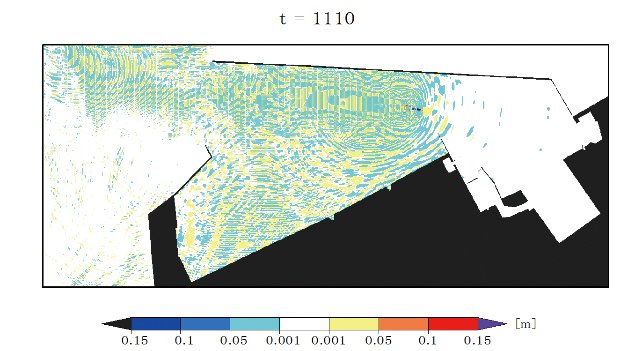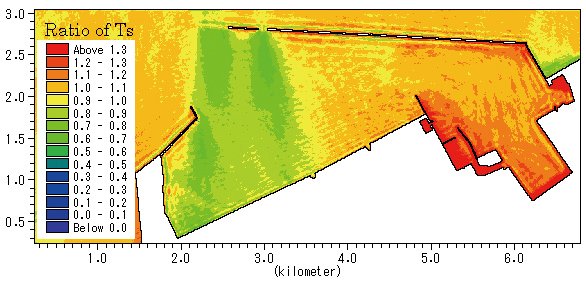Major Research 1C Research on Mitigation and Restoration of Storm Surge and Wave Disasters
Background and Objectives
Since Typhoon Vera struck in September 1959, there have been no devastating storm surge and wave disasters in Japan. However, the U.S. suffered severe damages due to Hurricane Katrina in September 2005, and so did the Philippines due to Typhoon Haiyan in November 2013. In future, global warming might bring higher storm surges and waves than those we have expected in Japan.
Therefore, this research is aimed for changing disaster prevention and mitigation measures into a pre-disaster stage from post-disaster one and focuses on how to mitigate damage by the maximum storm surge and wave conditions and how to rapidly recover and reconstruct after the damage has occurred. Therefore, we conduct research to encourage hard and soft measures. Specifically, we will develop a numerical model to estimate the maximum storm surge and wave and their damage and will also develop design methods to build robust structures.
Research Topics
Research and development comprises the following two subthemes:
- Research on storm surge, wave and maximum damage estimation
We will develop the following to determine the characteristics of the damage due to the maximum storm surge and wave: an accurate storm surge prediction model, which incorporates a weather model; and a new method based on a 3-D fluid model to simulate tidal levels and flows at the time of storm surge. Also, we will employ a high statistical analysis to estimate the effects of global warming on the maximum storm surge and wave and long-term variations in these statistics. In addition, we will establish a calculation technique to estimate the following wave transformations: the wave sheltering effects of breakwaters damaged through sliding, depression and others; and overtopping prevention effects of seawall having collapsed parapet, dispersed wave-dissipating blocks and other damages. - Research on the technology to reduce maximum storm surge and wave disasters
We will elucidate structural stability under complex conditions in which unexpectedly high water level due to storm surge coincides with high waves. In addition, we will investigate methods of estimating the damage on structures due to storm surge and waves and countermeasure against such damages, and develop a method to design robust structures.
Activities in FY 2019
Regarding the central processing and analysis of observational data on oceanographic phenomena, we organized the wave data observed through the Nationwide Ocean Wave Information Network for Ports and Harbours (NOWPHAS) in 2018 and compiled the annual wave observation report. Concerning the high waves caused by Typhoon Faxai that passed through Tokyo Bay from south to north, we analyzed the wave data acquired at the NOWPHAS station "Dainikaiho" and estimated them with a wave model.
For studying the seasonal and regional characteristics of swells observed along the coast of Japan and the mechanism of the swell development, we organized data to better understand the wave directional spectrum with multi peaks and the occurrence characteristics of wind waves and swells. It led that wind waves appear more frequent on the coast facing the Sea of Japan where wind waves caused by the winter monsoon are prominent. Meanwhile, swells play a larger role on the coast of the Pacific Ocean where swells generated by summer typhoons reach the shore. We also quantitatively confirmed that wave directional spectrum with multi peaks appeared more frequently on the Pacific coast than on the Sea of Japan coast.
Regarding the development of a harbor tranquility analysis method for local wind waves and ship waves, we suggested a novel harbor tranquility analysis method that considers ship waves, and quantitatively compared the cargo-handling efficiency between the conventional and presented methods. In addition, we conducted an experiment using a wind-wave flume to study the process of wave development under strong wind in a port, and discovered that the variation of water-surface friction velocity with wind velocity might depend on the initial state of the water surface.

Calculation of generation and propagation of ship from a sailing freight vessel (5,000 WT) in a port
For the evaluation of wave transformation and propagation characteristics around damaged structures to consider remaining performance for sheltering, we studied planar harbor waves behind submerged breakwater to verify the accuracy of the NOWT-PARI Boussinesq model. In addition, we performed calculation of wave transformation on model ports to study the wave-controlling performance of the breakwater partially submerged by disasters and newly constructed submerged breakwaters, and quantitatively elucidated the effects of the breakwaters on harbor tranquility.

Shortening of swell wave period caused by partially submerged breakwater (compared to 12s)
To assess the possible maximum storm surge hazard using a storm surge and wave coupled model, we first examined the reproducibility of storm surges along major coastal areas of Japan using the ROMS ocean model, and then focused on a sample port to estimate the storm surges and the associated coastal inundation using the ROMS-SWAN coupled model considering wave setup. In addition, we applied Emanuel's MPI theory to calculate the maximum intensity to which typhoons could develop and evaluated a method for defining the worst class typhoon.
Regarding the study on wave forces acting on the structural members of protective facilities under storm surges, high waves, and tsunamis, we conducted a hydraulic experiment to elucidate the wave force acting on seawalls having complicated structural cross sections which were damaged by Typhoon Faxai. In addition, we evaluated methods for estimating the maximum and time-series wave forces by applying ANN to the experimental data. We also verified the efficacy of a work method to prevent the detachment of geotextile sheets installed on backfill stones of seawalls by waves in a largescale experiment.



